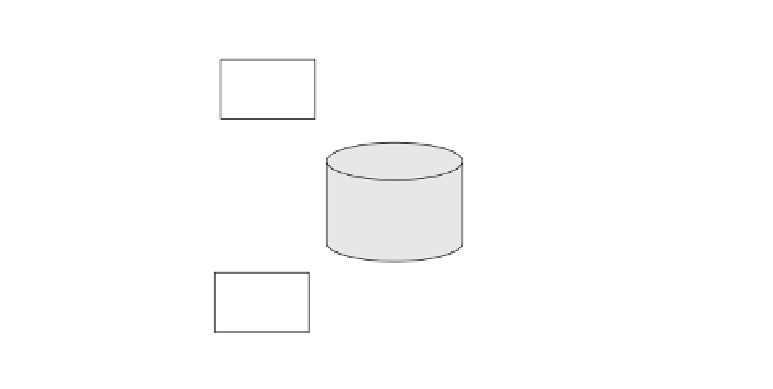Database Reference
In-Depth Information
USERS AT DIFFERENT
RESPONSIBILITY LEVELS
USERS PERFORMING
DIFFERENT FUNCTIONS
Business
Process
Business
Process
Business
Process
Business
Process
DATABASE
SYSTEM
Business
Process
Business
Process
USERS AT
DIFFERENT LOCATIONS
Figure 3-7
Information sharing: DB system as enabler.
PIVOTAL ROLE OF THE DATABASE SYSTEM
Let us pause and review our discussions so far. The database system in an organi-
zation supports the numerous business processes that take place there to achieve
the objectives of the organization's core business. You have noted that the database
system is indispensable for the business processes.
The database system provides the information essential for the successful per-
formance of business processes. Users at different responsibility levels, in various
functional departments, and at multiple locations—all need information from the
database to complete their business processes. Modern enterprises depend on col-
laboration among departments; the database system makes collaboration possible
by enabling departments to share vital information among themselves.
Data Storage
The database in an organization serves as the primary repository for corporate
information. In a company, data in different formats may be held within individual
departments in private files and spreadsheets. The accounting department may keep
budget numbers in departmental files. The marketing department may hold sensi-
tive information about some key clients in their individual files. Nevertheless, the
vast bulk of the organization's data resides in its corporate database.
Note the following aspects of storage of data and observe how the corporate
database supports the organization by storing data.
Data about business objects.
The organization's database stores data about all the
business objects that are relevant to the organization. For a medical center, the data-
base stores data about patients, physicians, diseases, diagnosis, treatments, medica-
tions, patient visits, patient stays, and so on. For a banking institution, the database
collects data about customers, checking accounts, savings accounts, loans, bank with-







































Search WWH ::

Custom Search